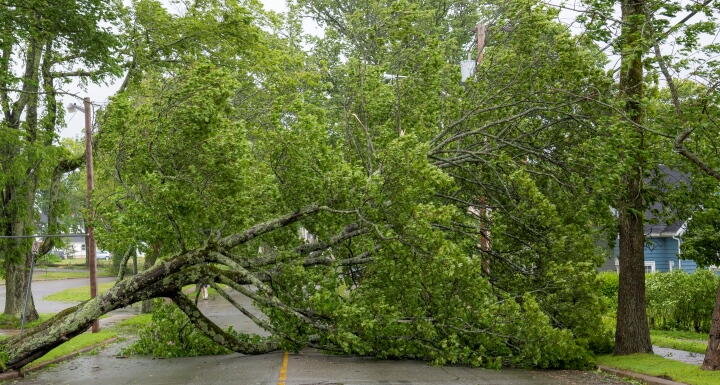It’s time to get hurricane prepared. Hurricane season, which runs from June 1 through November 30, is quickly approaching. Often times the first thing we do before a storm is stock up on essential supplies. Then we make sure our homes and families are protected. But we should also think about securing our source of shade and scenery—trees.
Trees are susceptible to hurricanes and tropical storms. If a hurricane is categorized as a 4 or 5, the strongest categories, there is not much we can do to “prepare” trees for the event. If a hurricane is a category 1-3 or reduced to a tropical storm, there are ways that homeowners and property managers can reduce the potential damage to trees.
- Choose quality trees, labeled “Florida Fancy” or “Florida #1.” These trees have a single trunk and need little additional training to form a structurally sound
- Choose trees that are appropriate for the Large trees need a large rooting zone. Tree roots extend three to five times the diameter of the tree’s canopy!
- Insufficient soil volume increases the risk of trees toppling. If the planting area or yard is small, choose a tree species that naturally stays Consider the mature height and width of the tree when choosing the planting site.
How a tree is pruned is critical to its overall health and longevity. Formative or structural pruning can strengthen a tree. It is best performed when the tree is young, during its first ten years. Not only are the branches easier to reach, but the resulting wounds to the tree will be much smaller and callus over more rapidly.
Tips and tricks of good pruning practices when hurricane prepping:
- Never cut a branch flush with the trunk, which is also known as making a flush cut
- Avoid “liontailing” or “overlifting,” which consists of removing side branches from a large branch, leaving only those at the distant end, resulting in limbs resembling a lion’s tail.
- Never “hat rack” or “top” a tree! It is illegal and potentially dangerous
- Avoid root pruning and digging around tree roots. This makes the tree more likely to fall during a storm.
- When pruning, only use removal cuts (prune a branch back to the trunk or parent branch) or reduction cuts (shortens the length of a stem by pruning back to a smaller limb)
- Don’t remove more than 25% of the canopy in a single pruning event. Palm trees don’t need hurricane pruning. Palms adapt to wind storms. Removing fronds has no benefit and is detrimental.
Trees can survive more than 100 years! They can survive hurricanes and storms, but they cannot survive human errors such as inappropriate tree selection, poor planting, and deficient pruning. For more information, contact our office at (813) 406-5413



